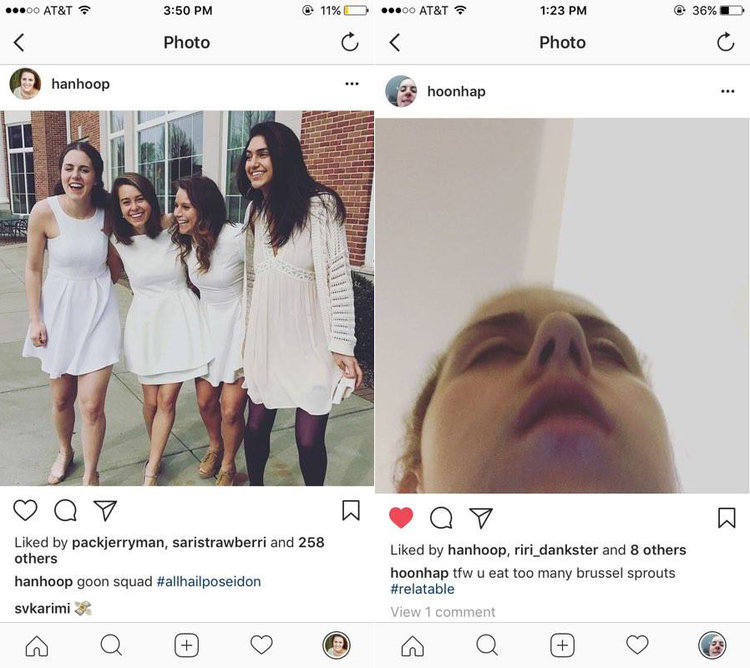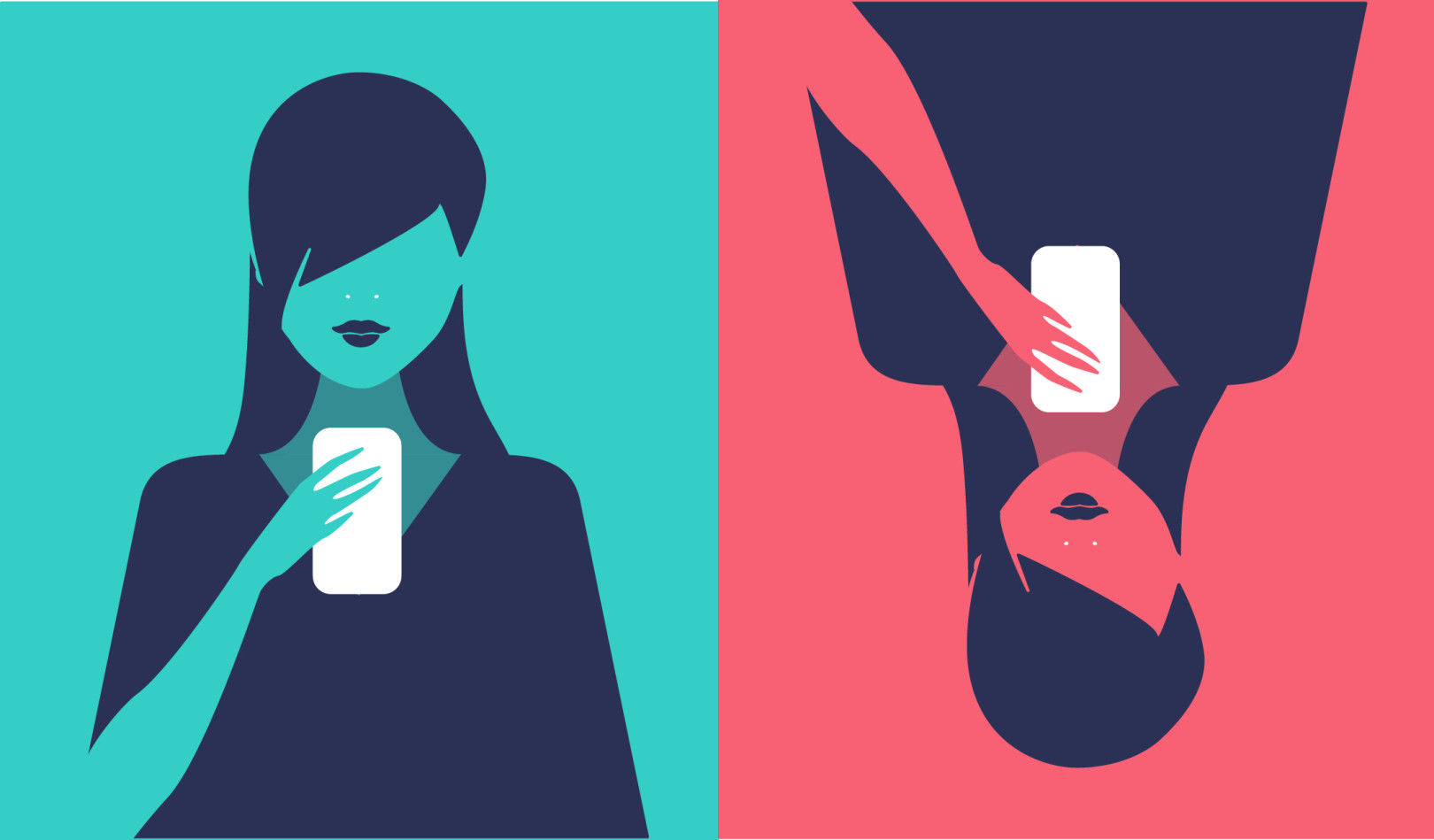By creating a second private Instagram account, some teens are investing in a more intimate social media presence not intended, nor suitable for, a wider following.

Finsta: Noun; a mixture of Fake & Instagram. People, usually girls, get a second Instagram account along with their real instagrams, rinstagrams, to post any pictures or videos they desire. The photos or videos posted are usually funny or embarrassing. Only your closest friends follow this account.
Thanks, Urban Dictionary, now I’m down with the kids. Rather than keeping less than acceptable thoughts and feelings in their brains where they belong, kids these days are posting them across Instagram, via the “Finsta”. It’s semi-private and totally intimate. By keeping followers in the low 10s and setting the account to private, teens are able to showcase a less curated and more authentic self, but only to their closest friends. In Instagram’s dogmatic vegan-paleo-model-slash-entrepreneur culture, the “Finsta” marks reprieve.
ppl think they’re gonna see explicit content when they follow my finsta when really all they’re gonna see is me crying and complaining sksks
— adrian (@ilovenosejobs) September 15, 2017
The finsta consists primarily of a mixture of ugly selfies and embarrassing anecdotes. As Rebecca Cibbarelli, 18, a student at Franklin & Marshall College told the New York Times:
“Everything that goes on my regular Instagram is a picture of me and other people, and everybody looks good, and it feels important… On finstagram, you post whatever you want because you don’t care.”
 Like all guilty pleasures, however, there’s a reason why we shouldn’t have them. When it comes to the finsta, that reason is bullying.
Like all guilty pleasures, however, there’s a reason why we shouldn’t have them. When it comes to the finsta, that reason is bullying.
Finsta: noun; a fake (or second) Instagram account, primarily used to hide scandalous and overtly sexual behavior, cultivate an alter ego, and function with anonymity to troll peers.
Basically, there’s a few reports condemning the added anonymity of the Finsta, as it emboldens people to be ruder, more malicious, and contemptuous. Health psychologist Dr Marny Lishman noted in her research on teen Finsta use:
“It could be friends that are no longer friends or other people at school. Some of my clients have reported awful stuff that’s been said in their private accounts, very threatening material that a bully would normally never say in front other people or in a public forum.”
Basic cyber-bullying stuff. However, it gets a little darker. A recent ABC news report detailed that a finsta account was used to impersonate a 14 year old girl and destroy her reputation. The account’s bio included the victim’s initials, as well as the name of a boy who she had a crush on, but who did not like her back. The fake account also left many comments and sent messages while impersonating the victim. That same report detailed that around 20% of the Australian e-safety commissioner’s complaints concern fake accounts.

It may seem inane; it’s not. It wasn’t very long ago that Dolly Everett committed suicide because of cyber-bullying. In Ireland, an 11-year-old girl committed suicide in 2016 after revealing her intentions to die on Instagram. Psychiatrist Dr Antoinette D’Alton has also found that children as young as seven have expressed suicidal thoughts:
“Years ago this would have been unimaginable. Now suicidal ideation is increasing in children as young as seven. There is a care pathway but it is under resourced.”
So what’s the deal with finstas? Good, bad, or an in-between? Perhaps the problem is not the medium, but the culture. The platform itself is not inherently good or bad. It’s just a platform. The problem is the culture where people feel entitled to bully, provoke and harass others behind the guise of anonymity. To blame Finstas as an entity is to treat the symptom, not the disease.
Rather than condemn the medium, condemn the culture that persecutes and bullies others. Rather than remedy the platform, remedy the victims who have had the platform turn against them.
What are your thoughts about fake accounts and finstas in particular?






